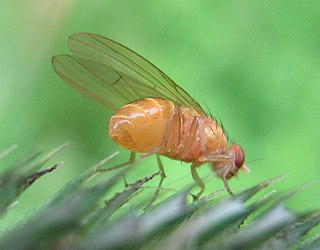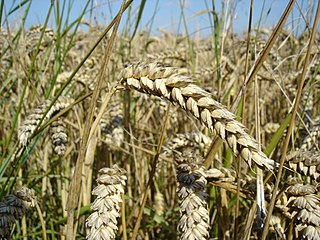Related Research Articles

Biology – The natural science that involves the study of life and living organisms, including their structure, function, growth, origin, evolution, distribution, and taxonomy.

Monocotyledons, commonly referred to as monocots, are grass and grass-like flowering plants (angiosperms), the seeds of which typically contain only one embryonic leaf, or cotyledon. They constitute one of the major groups into which the flowering plants have traditionally been divided, the rest of the flowering plants having two cotyledons and therefore classified as dicotyledons, or dicots.

The Bromeliaceae is a family of monocot flowering plants of 75 genera and around 3590 known species native mainly to the tropical Americas, with a few species found in the American subtropics and one in tropical west Africa, Pitcairnia feliciana.

Sir Arthur George Tansley FLS, FRS was an English botanist and a pioneer in the science of ecology.

Brocchinia is a genus of the botanical family Bromeliaceae, and is the sole genus of the subfamily Brocchinioideae, containing 20 species. The genus is named for Giovanni Battista Brocchi, Italian naturalist (1772–1826). Brocchinia species are native primarily to the ancient Guayana Shield in southern Venezuela and Guyana, with some species extending into Colombia and northern Brazil. Its species are generally restricted to areas of sand and sandstone of the Roraima Formation; a few occur on granite.
Frederic Edward Clements was an American plant ecologist and pioneer in the study of vegetation succession.

Phenotypic plasticity refers to some of the changes in an organism's behavior, morphology and physiology in response to a unique environment. Fundamental to the way in which organisms cope with environmental variation, phenotypic plasticity encompasses all types of environmentally induced changes that may or may not be permanent throughout an individual's lifespan. The term was originally used to describe developmental effects on morphological characters, but is now more broadly used to describe all phenotypic responses to environmental change, such as acclimation (acclimatization), as well as learning. The special case when differences in environment induce discrete phenotypes is termed polyphenism.

Joseph "Joe" Felsenstein is a professor in the Departments of Genome Sciences and Biology and Adjunct Professor in the Departments of Computer Science and Statistics at the University of Washington in Seattle. He is best known for his work on phylogenetic inference, and is the author of Inferring Phylogenies, and principal author and distributor of the package of phylogenetic inference programs called PHYLIP. Closely related to his work on phylogenetic inference is his introduction of methods for making statistically independent comparisons using phylogenies.
Ecophysiology, environmental physiology or physiological ecology is a biological discipline that studies the response of an organism's physiology to environmental conditions. It is closely related to comparative physiology and evolutionary physiology. Ernst Haeckel's coinage bionomy is sometimes employed as a synonym.
Biology is the natural science that studies life and living organisms, including their physical structure, chemical processes, molecular interactions, physiological mechanisms, development and evolution. Despite the complexity of the science, certain unifying concepts consolidate it into a single, coherent field. Biology recognizes the cell as the basic unit of life, genes as the basic unit of heredity, and evolution as the engine that propels the creation and extinction of species. Living organisms are open systems that survive by transforming energy and decreasing their local entropy to maintain a stable and vital condition defined as homeostasis.
Timothy F. H. Allen is a British botanist and former Professor of Botany and Environmental Studies at the Department of Botany, University of Wisconsin–Madison. Allen is a leader in the fields of hierarchy theory, systems theory, and complexity.
Kirsten Bomblies is an American biological researcher. Her research focuses primarily on species in the Arabidopsis genus, particularly Arabidopsis arenosa. She has studied processes related to speciation and hybrid incompatibility, and currently focuses on the adaptive evolution of meiosis in response to climate and genome change.

Theodore Garland Jr. is a biologist specializing in evolutionary physiology at the University of California, Riverside.

Heteroblasty is significant and abrupt change in form and function that occurs over the lifespan of certain plants. Characteristics affected include internode length and stem structure as well as leaf form, size and arrangement. It should not be confused with seasonal heterophylly, where early and late growth in a season are markedly different. This change is different from a homoblastic change which is a gradual change or little change at all so that there is little difference between the juvenile and adult stages. Some characteristics affected by heteroblastic change include internode length and stem structure as well as leaf form, size and arrangement. Heteroblasty is found in many different Families as well as different species within a genus, this random spread of heteroblastic plants across species is believed to be caused by convergent evolution.

Aditya Narayan Purohit is an Indian scientist and professor who has mainly worked on ecophysiology of tree species and physiology of high altitude medicinal plants. He was born in village Kimni, Dist. Chamoli. He has served as the Vice-Chancellor of Hemwati Nandan Bahuguna Garhwal University and as director of the university's High Altitude Plant Physiology Research Center. He was also the Director of Govind Ballabh Pant Institute of Himalayan Environment and Development from 1990 to 1995. Purohit was awarded Padma Shri, the fourth highest civilian award of India, by the President of India in 1997 for his valuable scientific contribution in Indian mountains.

Lazarus Walter Macior was an American botanist. He was professor emeritus and Distinguished Professor in Biology at the University of Akron.
Brian Joseph Enquist is an American biologist and academic. Enquist is a Professor of Biology at the University of Arizona. He is also external professor at the Santa Fe Institute. He is a broadly trained biologist, plant biologist and an ecologist. He is a Fulbright Fellow, has been listed in Popular Science Magazine as one of their "Brilliant 10", and was elected as a Fellow of the American Association for the Advancement of Science (AAAS) in 2012 and the Ecological Society of America (ESA) in 2018.
Thomas D. Sharkey is a plant biochemist who studies gas exchange between plants and the atmosphere. His research has covered (1) carbon metabolism of photosynthesis from carbon dioxide uptake to carbon export from the Calvin-Benson Cycle, (2) isoprene emission from plants, and (3) abiotic stress tolerance. Four guiding questions are: (1) how leaf photosynthesis affects plant yield, (2) does some carbon fixation follow an oxidative pathway that reduces sugar output but stabilizes photosynthesis, (3) why plants make isoprene, and (4) how plants cope with high temperature.
Joy Buswell Zedler is an American ecologist and professor of botany at the University of Wisconsin–Madison (UW), holding the title of Aldo Leopold Chair of Restoration Ecology. In addition to restoration ecology, she specializes in the ecology of wetlands, rare species, interactions between native and introduced species, and adaptive management.
Jean H. Langenheim is an American plant ecologist and ethnobotanist, highly respected as an eminent scholar and a pioneer for women in the field. She has done field research in arctic, tropical, and alpine environments across five continents, with interdisciplinary research that spans across the fields of chemistry, geology, and botany. Her early research helped determine the plant origins of amber and led to her career-long work investigating the chemical ecology of resin-producing trees, including the role of plant resins for plant defense and the evolution of several resin-producing trees in the tropics. She wrote what is regarded as the authoritative reference on the topic: Plant Resins: Chemistry, Evolution, Ecology, and Ethnobotany, published in 2003.
References
- ↑ University of Wisconsin–Madison. Botany Faculty. Retrieved 22 July 2014.
- ↑ Givnish, Thomas Joseph (1980). Leaf Form in Relation to Environment: A Theoretical Study. OCLC 606050264.
- ↑ American Association for the Advancement of Science (2003). Annual Report, p. 20. Retrieved 22 July 2014.
- ↑ International Plant Names Index. "Givnish, Thomas J."
- ↑ International Plant Names Index. "Givnish". Retrieved 22 July 2014.